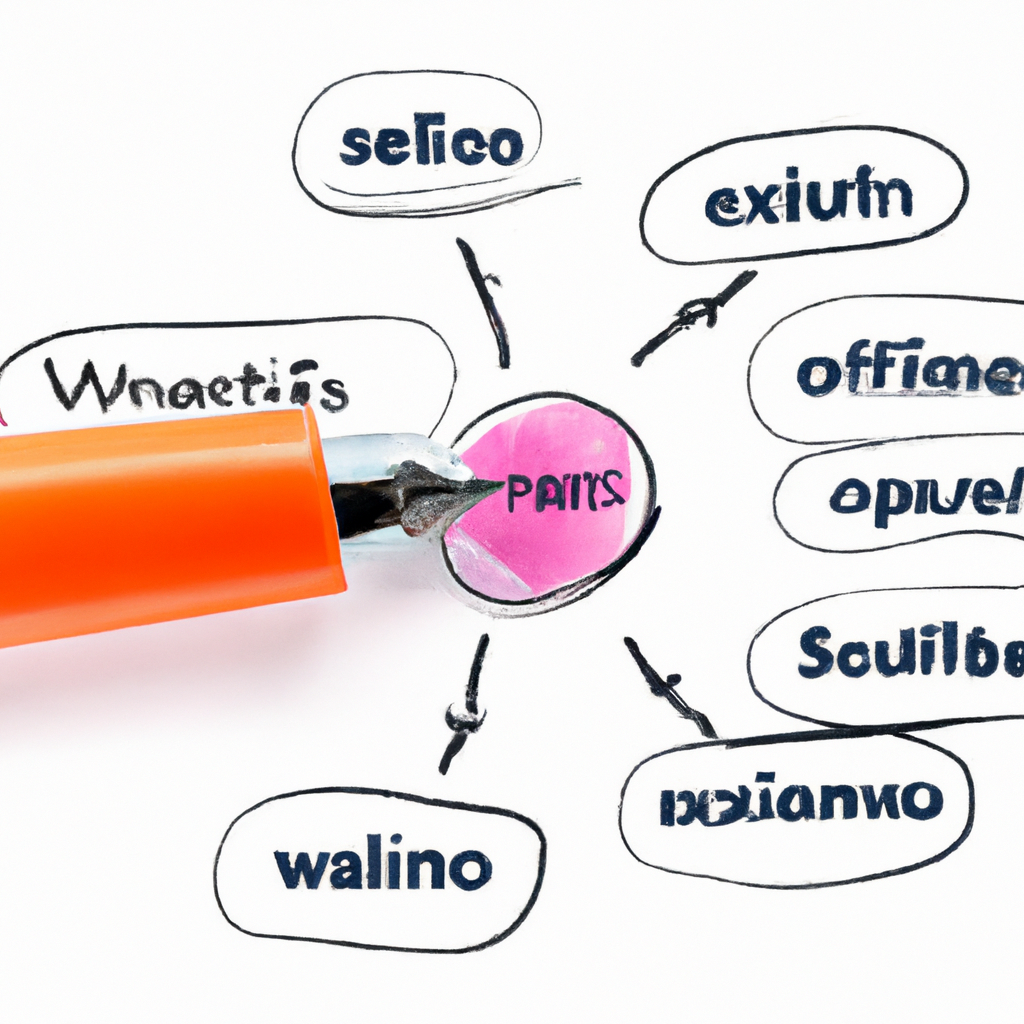Introduction to SEO and Local Search Engine Optimisation
In the vast territory of the Internet, SEO (Search Engine Optimization) is one of the key tools for increasing the visibility and appeal of your website. For local businesses in particular, local referencing is an essential component of SEO. It enables your business to appear more frequently and higher up in search results for users in your geographical area. It's an effective and targeted way of attracting more traffic to your website and converting that traffic into engaged customers.
The need for quality geolocated content
Local SEO is not simply a matter of inserting the name of your town or region in your title tags and meta description. It's a more complex process that starts with the creation of quality geolocalised content. This content, whether it's blog posts, descriptions of products or services, or information about your business, is written in such a way as to highlight your link with the local community, while offering valuable and relevant information for your visitors. By optimising this content for search engines, you can attract more local traffic and establish your company's reputation as a local authority in your field.
Need a website?
Ask for a free quote!
html
Mapping local search intentions before writing
When you open Google Keyword Planner or Semrush, your first instinct is often to look for the volume of queries for a given keyword. However, in a geolocalised content strategy, granularity takes precedence over mass: "artisanal bakery" may seem like a promising search term, but "artisanal bakery Nantes Graslin district" attracts traffic with a higher probability of conversion. The former Parisian brand < has doubled its average shopping basket simply by adapting its product sheets to target micro-neighbourhoods rather than a single generic keyword for the whole of the capital. The exercise involves superimposing an urban map and a semantic map: by observing tram stops, shopping streets and office centres, we discover as many search segments as there are catchment areas. Each micro-zone can then be assigned a cluster of subjects to be broken down into articles or landing pages.
has doubled its average shopping basket simply by adapting its product sheets to target micro-neighbourhoods rather than a single generic keyword for the whole of the capital. The exercise involves superimposing an urban map and a semantic map: by observing tram stops, shopping streets and office centres, we discover as many search segments as there are catchment areas. Each micro-zone can then be assigned a cluster of subjects to be broken down into articles or landing pages.
The notion of "intention" cannot be reduced to the informational/commercial/transactional opposition; it also includes the mobility variable. A common example: a tourist typing in "hairdresser nearby looking for a service provider open immediately", while a local resident will carry out more comparative searches ("colourist's advice Saint-Michel"). In 2023, the Think with Google study showed that queries "near ... open now" increased by 400 %. Writing an article to capture the "open now" intention means incorporating seasonal timetables and even real-time updates via tagging. <meta> or Google Business Profile posts.
Information architecture: prioritising towns, districts and points of sale
A multi-site website - like that of the L'Orange Bleue chain of sports halls - illustrates the tree structure issue. Each club has its own page: "/club/toulouse-jean-jaurès . Above this, a "Toulouse sports halls" category page groups together all the sports facilities available in Toulouse, while a national "French sports hall" level acts as a mesh node. This concentric pyramid facilitates internal PageRank circulation: the "neighbourhood" pages receive contextual links from the city page, which is pushed by the national page. Google then understands the geographical relationship thanks to the breadcrumb and the semantic URL tic.
tic.
For SMEs with a single establishment, the architecture may seem trivial, but creating a hub of local content is still relevant. An osteopathy practice in Rouen has divided its blog into "Osteopathy Rouen Rive Droite", "Rive Gauche" and "Plateau Ouest" sections. Each section offers contextualised health advice: "Relieving back pain when working in the port of Rouen", "Stretching your lower back after the Paris-Rouen train". Result: +38 % of organic traffic on queries including urban markers.
Audit of local competition
Before determining your site plan, it's a good idea to analyse your competitors' digital footprint. Tools: Serpstat for keyword coverage, Majestic for local link mapping. In particular, you can spot the density of "neighbourhood" pages and geographical anchors in backlinks. An independent bookshop in Lyon discovered that the Fnac and Decitre chains had no optimised content on "Librairie Croix-Rousse". By writing a series of cultural articles dedicated to the district (history of the traboules, portraits of Lyonnais authors), it was positioned on the first page within three weeks.
Writing an effective geolocalised landing page
The geolocalised landing page is not a simple duplicate of a parent page in which "Paris" is replaced by "Marseille". Google devalues thin content and surface localisation. A good practice is to compose :
- A teaser paragraph highlighting the cultural roots of the site ("In Marseille, between the Plaine and the Old Port... ).
- A contextualised benefits section (climate, consumer habits, recurring events).
- Local customer testimonials with first name and initial of the district (proof E-E-A-T).
- A FAQ from AnswerThePublic on hyper-local issues.
When Uber Eats launched its service in Reims, each district had its own page: "Sushi delivery in Reims Clairmarais", "Pizza delivery in Reims Cernay-Épinettes". The pages mixed historical data ("Clairmarais, a former railway workers' district...") and logistical information ("average delivery time of 18 minutes at weekends"). The editorial contribution went beyond the simple listing of restaurants, which pushed the bounce rate below 30 %.
Insertion of named entities and semantic markup
Named entities - monuments, streets, events - act as credible co-occurrences. The WordLift or InLinks plugin automatically flags up entities in the editor, generating a @id JSON-LD of type "Place . For example, for an article entitled "Renovation of a flat on the Ile de Nantes", you could mark it as "landmark: "Les Machines de l'Île. This annotation increases the probability of appearing in local pack enriched.
Managing duplication between several locations
Estate agency networks often make the "identical template" mistake. The ORPI chain had to remove 2,200 duplicate pages in 2021 after a Screaming Frog audit: only the metadata and the name of the town changed, the body remained identical. Google downgraded 17 average positions. Remedy: create a common base of 60 % (services, guarantees) and 40 % of unique text (local market, transaction statistics, top 5 profitable streets). Use the variable <h3> Price per m² in {{city}} </h3> is not enough; we need to include concrete examples ("Rue Jeanne-d'Arc, average price of €3,450/m² compared with €2,900 for Caen as a whole").
Another strategy: "glocal" content that can be modulated via AMP. The travel blog editor Evaneos loads blocks including real-time weather and a geotagged Instagram feed. Two users in the same city do not get the same page depending on their time zone or language. The challenge? Ensuring that the initial HTML rendering remains indexable. The dynamic data is then injected by JavaScript in hydration with an attribute data-nosnippet to avoid duplication.
Case study: French success stories in content geolocation
VSEs are often cited as examples, but let's look at three distinct contexts.
The Toutou Clean network of dog groomers
By 2020, the brand had 14 salons. Each salon page featured a simple Google Maps map. After the audit, they added :
- Storytelling about the majority dog breed in the area (e.g. "In Mérignac, the Border Collie dominates").
- A local calendar of dog events (agility competitions, pet Christmas markets).
- A before-and-after gallery of local customers with
ItemReviewed : PetGrooming.
Local organic traffic jumped by 212 % in six months, more than national SEA. The brand found a correlation between content length and telephone conversions: over 900 words, calls increased by 17 %.
The CAPC Bordeaux Museum of Contemporary Art
While most cultural institutions limit their content to a calendar of exhibitions, the CAPC has published blog posts bridging the gap between art and life in Bordeaux: "Street art on the quays" or "The shadow of the old wine cellars in the museum's architecture". An Ahrefs study reveals that 42 % of backlinks come from local tourist sites, compared with 9 % in 2018. Organic visibility on "Bordeaux museum has risen from 7ᵉ to 2ᵉ position.
The agricultural marketplace "La Ruche qui dit Oui!
Each beehive (collection point) has its own page, but the start-up has also created "Producer Portrait" editorial pages indexed by commune. By integrating OpenData data (pesticide rates, average carbon footprint), the page gains the status of a local reference beyond simple e-commerce. Result: +65 % of long-tail traffic on informative queries ("producer miel bio Béthune , " ferme pédagogique Orne ). The perceived authority then naturally converts into sales.
The role of NAP, Schema.org markup and structured data
NAP: Name, Address, Phone. These three elements must remain identical on each page and in each quotation. A Moz study shows that NAP inconsistencies account for 16 % of local penalty factors. Use <span itemprop="name"> rather than just bold text, add itemtype="http://schema.org/LocalBusiness". Combine with areaServed to describe the coverage area: many people omit this property, but Google reads it to adjust geographical relevance.
If your restaurant offers a "Beaujolais nouveau menu", encode it: "@type: "FoodEvent, "location":{ "@type": "FoodEstablishment", "address":{...}}. The "Buy tickets" buttons can then be transformed into "Reserve a table" buttons directly in the SERP, cannibalising the OTAs (OpenTable, TheFork). Content thus takes on an immediate transactional dimension.
Local backlinks and neighbourhood partnerships
We can't talk about content without mentioning distribution. Links from the regional press, a tourist office or a sports association will display a geographical plausibility. The semantic value of a link from the "course-solidaire-annecy.fr" site to a physiotherapy practice in Annecy is greater than a national link of average authority. The traditional ice cream brand La Fabrique Givrée has increased the number of sponsored posts in local blogs (Lyon, Nîmes, Valence) describing short supply circuits. Each time, the content mentioned specific departmental routes and markets, reinforcing the local anchoring. Positions on "glacier + town" gained an average of 4 places per backlink of this type.
A complementary approach: the exchange of open data. Montpellier council publishes datasets on the location of food-trucks. A creator of culinary content integrated this data into an interactive map, quoting the official source. The town hall then relayed the tool on montpellier-france.com with a link back to the home page. The moral of the story is that open data can be used as an editorial bargaining chip.
KPIs and tools for measuring local performance
Beyond gross traffic, the star indicator remains the visibility in the Local Pack. Solutions such as BrightLocal and LocalViking simulate the SERP at distances of 1 km and 5 km from the point of sale. A law firm in Lille measured a visibility of 93 % within a radius of 500 m, but only 28 % at 4 km. Decision: target outlying districts with content dedicated to "legal advice in the Eurasanté zone". Three months later: +46 % of Google Business impressions outside the city centre.
On the commitment side, keep an eye on the scroll depth A rich local page often sees a return to the top for the telephone number. Install a Google Analytics "scroll 80 %" event coupled with a onclick on the tel:. The web agency Optimize Me notes a call/scroll ratio of 0.6:1 as the break-even point.
Finally, attribution is complex: a web surfer may type in "Toulouse Capitol dentist" on Monday, read a blog post on Tuesday, and then click on the Google listing on Thursday. GA4's Assisted Conversions report, cross-referenced with the blog's UTM data, identifies these paths. In 27 % of cases, geolocated content was the first interaction rather than the last, proving its role as a top of funnel.
Common pitfalls and the risk of penalties
The first trap: automatically generated "near [city]" pages. In 2022, Wix de-indexed 52,000 pages created by merchants using a mass location generation plugin. Google classified them as "doorway pages". Avoid textual spinners or gemach variables. Write them manually or apply a logic of programmatic SEO qualitative: retrieve exclusive data (prices, weather, stock) that really changes the content.
Second pitfall: over-optimising the tag title Pizzeria Toulouse | Pizzeria Blagnac | Pizzeria Colomiers is perceived as keyword stuffing. Prefer a title for each location, even if it means creating several pages. Also forget about fake reviews integrated into quote blocks; Google has been deploying a review spam classifier since 2023.
Voice search and generative AI: what developments for local content?
Voice search takes advantage of natural language: "Where can I find a gym that's open at 6 a.m. near here? Content structured as FAQs, combined with tagging Speakableare more likely to be read by Google Assistant. Early adopters, such as the Orange Bleue cinema chain (again), have seen their share of voice traffic rise to 8 % in 2024.
Search Generative Experience (SGE) AI favours quotable content. Google summarises and mentions source extracts. Tests carried out by the Neper agency show that paragraphs containing local figures (e.g. "72 % of the inhabitants of the Doulon district like... ) are taken up more often than generic phrases. In other words, uniqueness and precision strengthen "citability" in the era of generative AI.
To get ahead of the game, create autonomous, well-marked, easily extractable blocks of content: . Document the source: INSEE, OpenStreetMap, Sirene database. You'll be adding value, proving your expertise and increasing your potential for being cited by AI.
Operational checklist for your next location-based content
1. Identify 5 strategic micro-zones by cross-referencing CRM data + Google Maps.
2. Extract the associated queries (People Also Askautocomplete) and segment them by intention.
3. Create a city ' district ' service tree without duplicating.
4. Write ≥ 800 words, include local entities, geotagged images, FAQ.
5. Implementing Schema.org : LocalBusiness, Place, Event where applicable.
6. Publish and relay on local Facebook/Instagram pages + contact local media for backlinks.
7. Monitor Local Pack visibility and call tracking conversions every 2 weeks.
8. Update at least once a quarter (timetables, seasonal photos, new stats) to avoid obsolescence.
Action-oriented conclusion
Writing for local SEO is all about striking a balance between editorial depth and geographical relevance. The examples analysed - from the local pizzeria to the national marketplace - show that content that "feels the city" converts more and is more resistant to algorithmic changes. By keeping the reader's mental map in mind (my neighbourhood, my route, my immediate needs) and by mobilising the technical tools (structured data, dedicated KPIs), you can transform each page into a veritable digital ambassador for your establishment.









